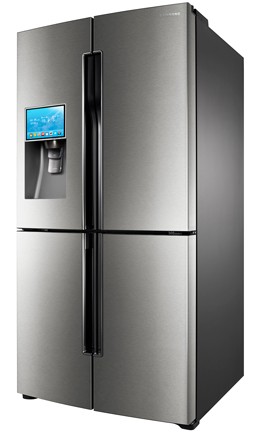Beware Your Refrigerator

By Merry Morris
What has the world come to when you can be betrayed by your household appliances? Is nothing safe from cyber attack? Surprisingly, answers to these questions are related and very timely.
In the world of cyber security, hacking has been taken to a new high with the recent development of “Funtenna.” While it may sound like fun and games, “Funtenna is malware that intentionally causes compromising emanation”, says developer Ang Cui of Columbia University and Red Balloon Security. In other words, it’s software that can steal protected data from networks whose owners thought were perfectly safe.
Hackers And Hacking
If this development leaves you wondering why finding new ways to steal data is a good thing, an explanation of “hacker” and “hacking” might help. Generally a hacker is someone who is able to penetrate “secure” computer systems and networks. Hackers intentions might be ethical, such as identifying security vulnerabilities or nefarious, such as identity theft, known as “cracking.”
Back To The Refrigerator
Hacking has become much easier thanks to Ang Cui and his colleagues. With their new approach, it’s possible to snatch data out of protected networks without setting off alarms and by operating across large parts of the electromagnetic spectrum, from below human hearing to radio frequencies and further.
Using “Funtenna” software, they can make modern devices broadcast invisible, inaudible signals over miles. That’s where your refrigerator comes in, but the device could also be a printer, air conditioner, washing machine – items that would not be suspected of such a sophisticated, covert application. Cui’s research also suggests that a computer need not be online to be susceptible to attack.
Recently, Cui’s company, Red Balloon Security, demonstrated Funtenna’s potential using an inexpensive printer. They “hijacked” the printer and began flipping its chip’s energy back and forth, creating electromagnetic radiation that was transformed into computer code. The printer was altered, turning its wires and components into a radio transmitter. Directed to a target, the simple device plus Funtenna directed the target to emit its data as radio signals. The stolen data was recovered with a “software-defined radio receiver” (i.e., no hardware needed) and AM radio antenna.
“Here with Funtenna, I can beat the best network detection in the world with just an AM radio,” Cui noted. Though the emanation of data is slow, it doesn’t matter if no one knows to look for it.
Extension Questions
- How might a hacker be of help to network security experts?
- Investigate AM radio diagrams. How easily could you make an AM radio in class?
- Research “Black Hats” and “White Hats” in the hacker community. What are each group’s intentions?